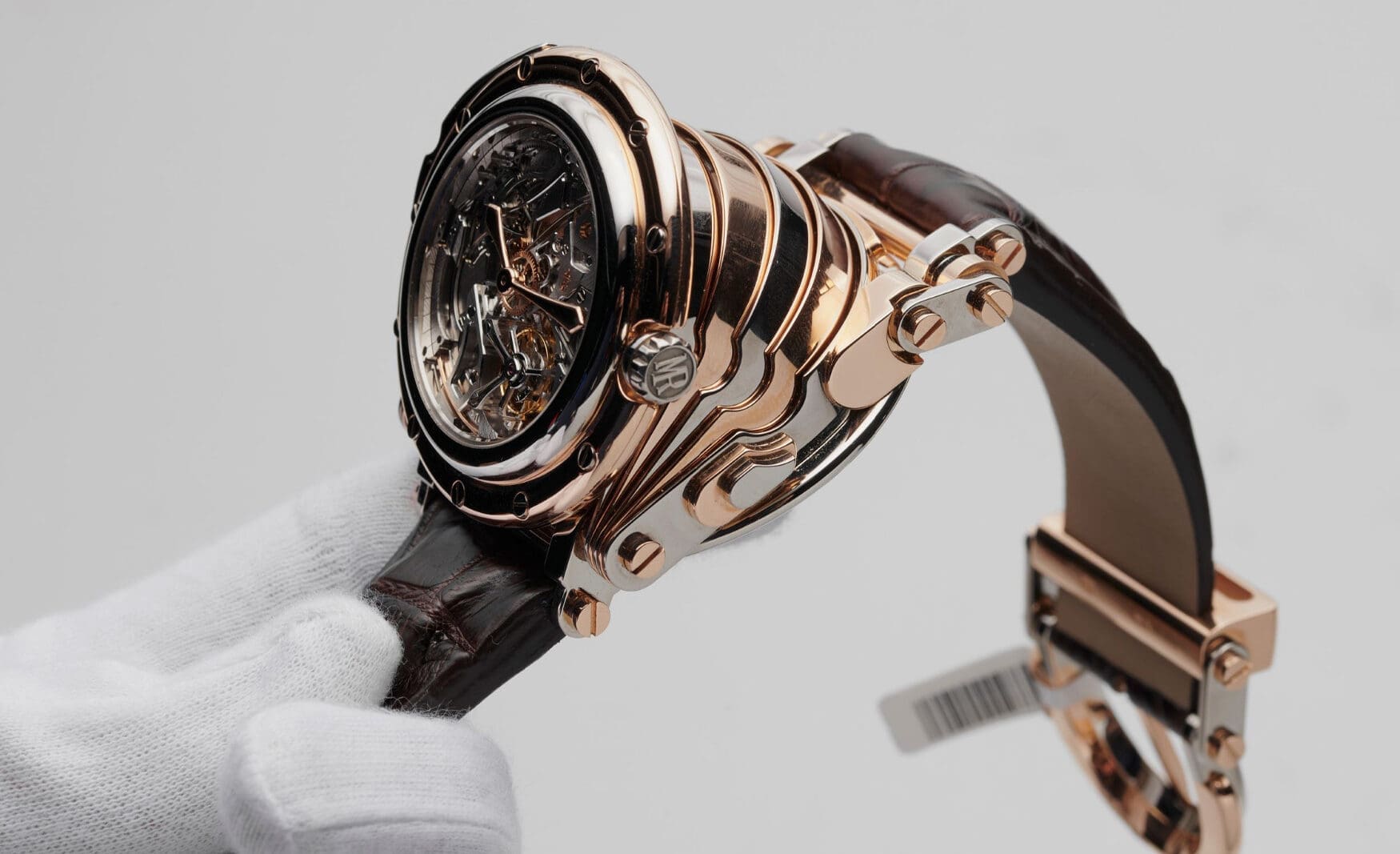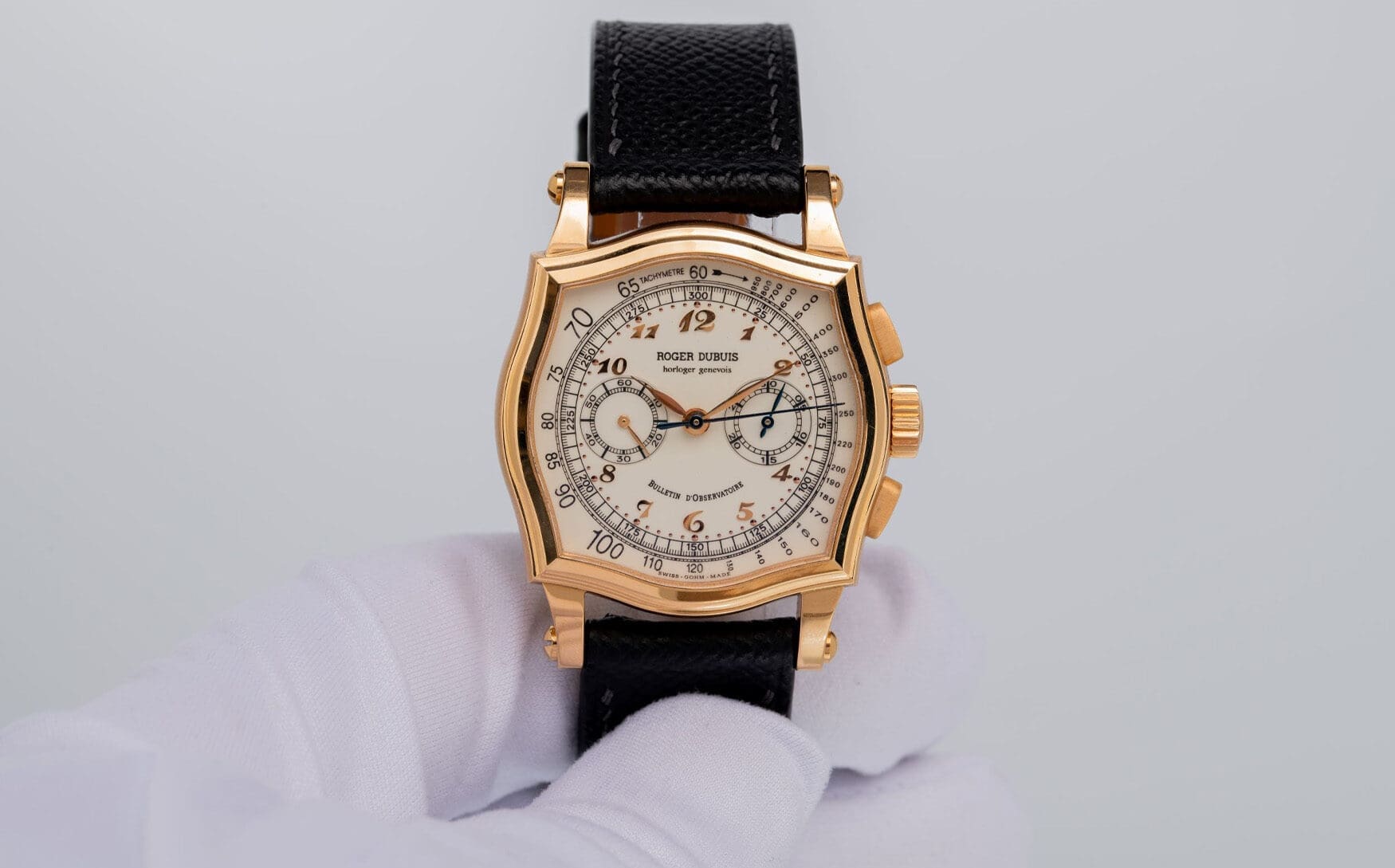T+T’s favourites from the upcoming Independents Ineichen Auction
Fergus NashIneichen Auctioneers are renowned for promoting some of the most exciting watch auctions in the last few decades, and the upcoming Independents Auction is shaping up to shock and surprise. The focus hasn’t just been put on independent watchmakers, but specifically some of their rarest and even unique pieces that will command a lot of interest. Bidders won’t just be trying to score a good deal on a watch, but rather vying to own a part of that brand’s very story. Now only a few weeks away from the start of the auction, let’s dive in to some of our favourite lots.
Manufacture Royale Opéra Répétition Minutes Tourbillon
One of the greatest literary figures of the 18th century was Voltaire — the famed French libertarian who loudly critiqued the Catholic Church, campaigned to separate church and state, advocated free speech, and also founded a watch brand. The original workshops for Manufacture Royale were set up by Voltaire in 1770 in Geneva, employing Jean-Antoine Lépine who was the Clockmaker to King Louis XV and later the teacher of Abraham-Louis Breguet. Since then, the brand that vanished has been revived by the Gouten family and continues to make extraordinary watches. The Opéra Répétition Minutes Tourbillon we see here is proof of the fine line between insanity and genius, intended as an extreme example of their modern watchmaking capabilities.
Surrounding the two-tone case of white and rose gold is a pivoting lug system, not only embodying an almost steampunk aesthetic through mechanical intricacy but also helping to conform the lugs to the wearer’s wrist. Despite a 50mm diameter, it should always remain comfortable. As if that wasn’t enough, the primary aspect of this wild case is a bellows-style system of sleeves that lets the face of the watch fold outwards, inspired by the Sydney Opera House. More than just a technical achievement for the sake of a good party trick, the expanded space within the case enables the minute repeater chimes to be louder and fuller, as lower frequencies can resonate more readily in a large chamber. The movement itself was developed by Fabrique du Temps, with an openwork display on the dial to boast elaborate decoration, minute repeater gongs, and the tourbillon at 5 o’clock.
Cabestan Trapezium 5
With inspiration from ships and yachting, the Cabestan name was founded as a watch brand in 2003 after the old French word for a capstan or winch, used to tension ropes and cables. Once you see how the founder Jean-François Ruchonnet managed to take that principle and turn it into a vertical movement and display on the wrist, you will understand why this limited edition release is such a special piece. It took five years of development and prototyping for the first releases to be realised in 2008, helped along by Vianney Halter as well as Eric Coudray who perfected the spherical biaxial tourbillon for the Jaeger-LeCoultre Gyrotourbillon. After some unfortunate difficulties, Cabestan Watches changed hands until it stabilised under Lionel Betoux in 2013, but their watches are still extremely limited or unique and are difficult to find available for sale.

Urwerk UR-102

This particular example is one of the earliest examples from Urwerk’s catalogue, bearing the #50 on the caseback from a limited edition of 50 pieces. It’s just as easy to read as ever, with five minute markings on the display window and nice bold Arabic numerals. At 38mm, the stainless-steel disk is actually a surprisingly sophisticated watch, which could easily dress up or down for a sci-fi twist on your outfit.
Gelfman IN-16 Nixie
Gelfman was founded in 2014, merging high-end luxury watchmaking with some of the retro-futuristic and nostalgic charm that skyrocketed in popularity during the early 2010s. If you haven’t heard about Nixie tubes before, you’ve definitely seen them in movies and television. From the late ‘50s to the late ‘80s, Nixie tubes were used in all sorts of consumer products like clocks as well as scientific and industrial machines to display numbers. Each tube has a stacked filament with numbers from 0-9, and would light up the required number on command with a beautiful orange glow.
Various Nixie watches have been released in recent years using new-old-stock tubes, but the Gelfman IN-16 Nixie is a lot more than just an Etsy project with some cheap PCB. The stainless-steel case is shaped like a jet-pack, with polished canisters containing two 1980s Soviet Nixie tubes. It uses a quartz movement with a rechargeable battery that boasts a five-day power reserve, and also recognises wrist gestures to bring up the digital display whenever you check your wrist. It shows the time in two steps, beginning with two digits for the hour and then two for the minutes. The IN-16 Nixie is a limited edition of 999 pieces, and was also nominated for the “Petite Aiguille” category in 2022’s GPHG awards.
Roger Dubuis Sympathie Chronograph
Roger Dubuis nearly needs no introduction, due to a dramatic increase in his recognition over the past few years. Founding his own brand in 1995, Roger Dubuis used his previous expertise working for Patek Philippe to make a range of watches focusing on traditional Swiss techniques, as exemplified by vintage watches. The brand’s co-founder Carlos Dias brought with him a passion for Art Deco design, which can really be seen in this early example of a Sympathie Chronograph.
The 37mm Roger Dubuis Sympathie Chronograph is undeniably a masterpiece of watchmaking, regardless of your personal tastes. The flared shape of the gold case has a sapphire crystal to match, which was even harder to achieve when this watch was produced in the late ‘90s. The dial is adorned with characterful tachymetre markings of varying sizes that breathe life into it, while the shiny Breguet applied numerals hold steady that sense of refined class. The movement is based on the Lémania 2310 calibre, which also shares roots with the famed Omega calibre 321 that powered the Speedmaster on the moon. It’s also a certified chronometer from the Besançon Astronomical Observatory, having proven itself to standards much higher than what we’re used to from COSC.












